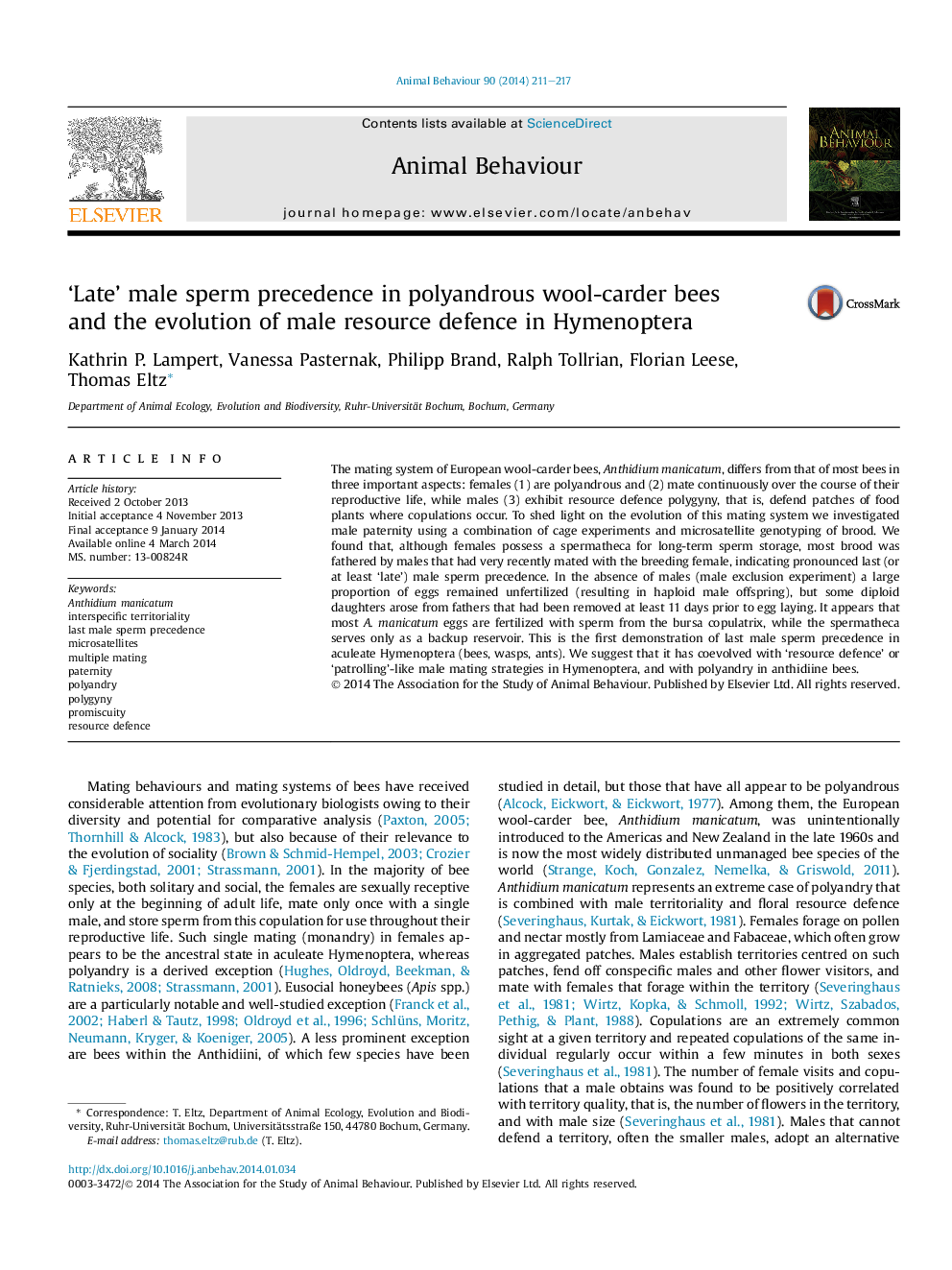| کد مقاله | کد نشریه | سال انتشار | مقاله انگلیسی | نسخه تمام متن |
|---|---|---|---|---|
| 2416392 | 1552238 | 2014 | 7 صفحه PDF | دانلود رایگان |

• We tested ‘late’ male sperm precedence (LMSP) in wool-carder bees.
• We used microsatellite markers to establish paternity.
• Males late in sequence of copulating competitors fathered more brood.
• No sperm mixing was found.
• LMSP may promote evolution of resource defence male mating strategies in Hymenoptera.
The mating system of European wool-carder bees, Anthidium manicatum, differs from that of most bees in three important aspects: females (1) are polyandrous and (2) mate continuously over the course of their reproductive life, while males (3) exhibit resource defence polygyny, that is, defend patches of food plants where copulations occur. To shed light on the evolution of this mating system we investigated male paternity using a combination of cage experiments and microsatellite genotyping of brood. We found that, although females possess a spermatheca for long-term sperm storage, most brood was fathered by males that had very recently mated with the breeding female, indicating pronounced last (or at least ‘late’) male sperm precedence. In the absence of males (male exclusion experiment) a large proportion of eggs remained unfertilized (resulting in haploid male offspring), but some diploid daughters arose from fathers that had been removed at least 11 days prior to egg laying. It appears that most A. manicatum eggs are fertilized with sperm from the bursa copulatrix, while the spermatheca serves only as a backup reservoir. This is the first demonstration of last male sperm precedence in aculeate Hymenoptera (bees, wasps, ants). We suggest that it has coevolved with ‘resource defence’ or ‘patrolling’-like male mating strategies in Hymenoptera, and with polyandry in anthidiine bees.
Journal: Animal Behaviour - Volume 90, April 2014, Pages 211–217